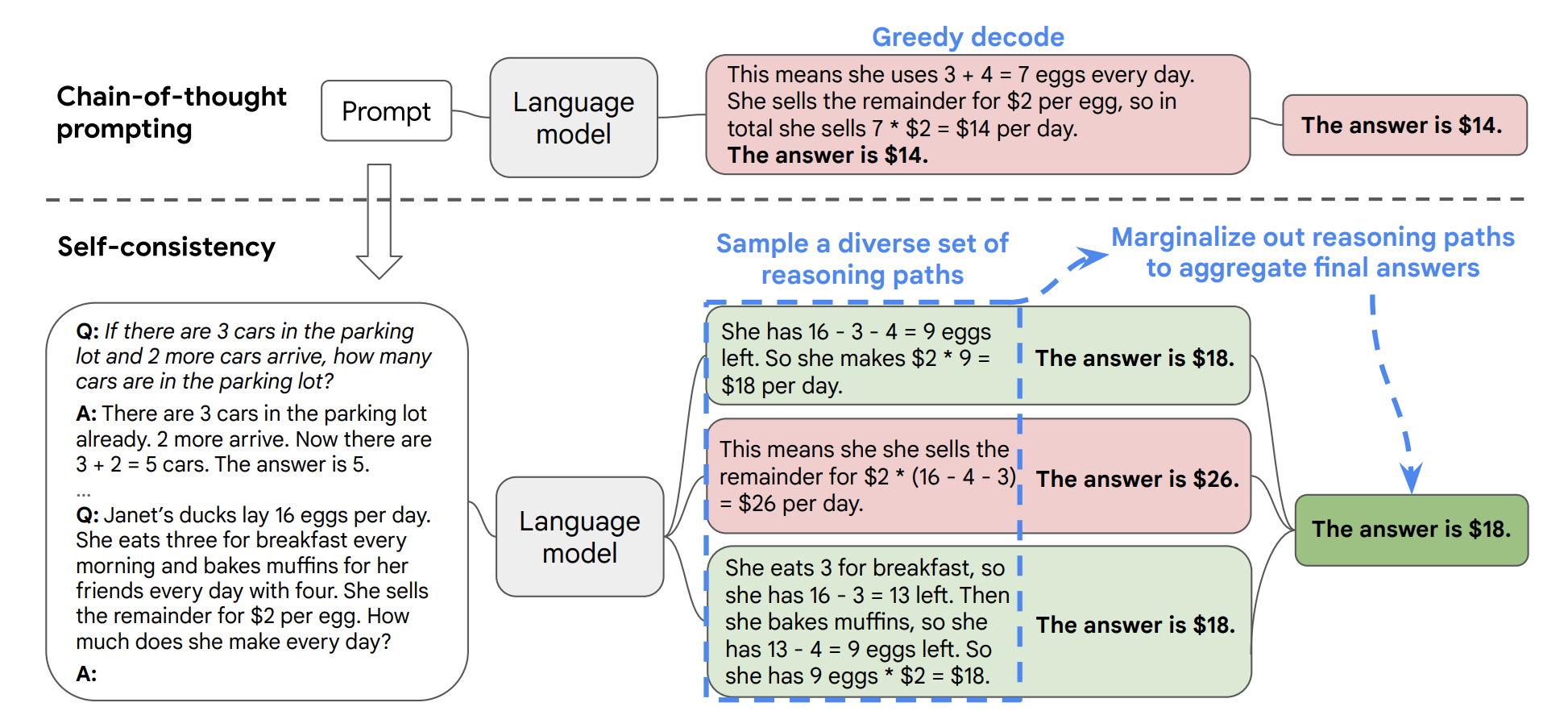Self-Consistency
Self-consistency is a supplementary technique in Chain of Thought that allows the model to generate multiple chains of thought and select the most frequent answer as the final result.
According to 2022 research by Xuezhi Wang et al.,when we optimize the model using only one chain of logic, there is still a possibility of the model making errors. To address this, XueZhi Wang et al. proposed a new method that involves running the model multiple times and selecting the most frequent answer as the final result:

In my experience so far, ChatGPT seems highly self-consistent - I haven't seen cases of multiple differing answers yet. From my research, self-consistency appears more useful for evaluating model quality - good models tend to be more self-consistent.
For this example, consider the following multi-step reasoning problem:
Consider a multi-step reasoning problem like the following:
Question: If a store has 10 apples and 8 oranges, and it sells 6 apples and 4 oranges, how many fruits are left in the store?
Instead of directly answering the question, the chain-of-thought prompting would require the language model to produce a series of short sentences that mimic a human's reasoning process:
The store has 10 apples.
The store has 8 oranges.
6 apples are sold.
4 oranges are sold.
There are 10 - 6 = 4 apples left.
There are 8 - 4 = 4 oranges left.
The store now has 4 apples + 4 oranges = 8 fruits.
Using self-consistency, the language model generates multiple reasoning paths:
Reasoning Path A:
The store has 10 apples.
The store has 8 oranges.
6 apples are sold.
4 oranges are sold.
There are 10 - 6 = 4 apples left.
There are 8 - 4 = 4 oranges left.
The store now has 4 apples + 4 oranges = 8 fruits.
Reasoning Path B:
The store initially has 10 apples and 8 oranges.
It sells 6 apples, so there are 10 - 6 = 4 apples left.
It sells 4 oranges, so there are 8 - 4 = 4 oranges left.
The store now has 4 apples + 4 oranges = 8 fruits.
Self-consistency selects the most consistent answer from multiple inference paths. Here, inference paths A and B both yield the same conclusion (8 fruits). This approach increases the model's confidence in the final answer.